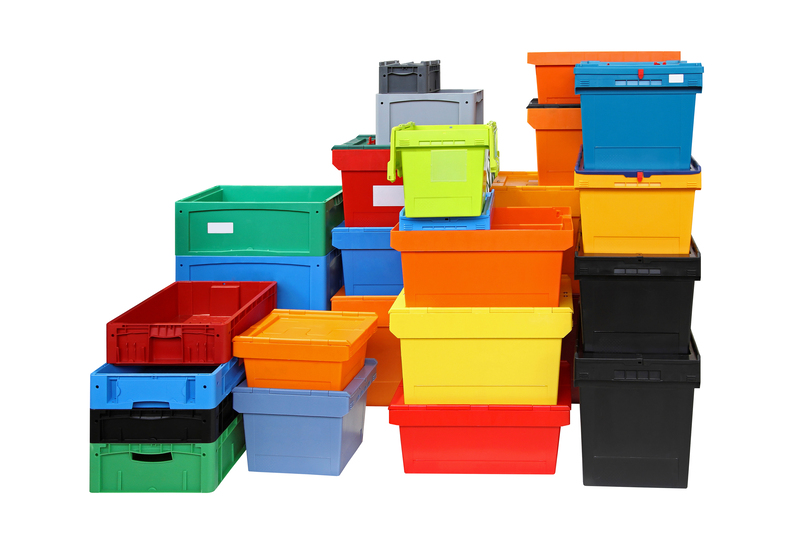Freezer Storage: Everything You Need to Know
Posted on 18/05/2025
Freezer Storage: Everything You Need to Know
Freezer storage is an essential aspect of modern food preservation, allowing households and businesses to extend the shelf life of perishable items, reduce food waste, and save money. In this comprehensive guide, we'll explore all facets of freezing food--from choosing the right freezer and organizing your space, to safely storing different types of food, thawing techniques, and maximizing freezer efficiency. Whether you're a busy parent, a meal prep enthusiast, or a foodservice professional, mastering freezer storage can give you peace of mind and fresher meals all year round.
Benefits of Proper Freezer Storage
Before diving into the mechanics of freezing, it's important to understand why proper freezer storage matters. Freezer storage offers numerous benefits, including:
- Extending Shelf Life - Foods can be safely stored for months, sometimes even a year or more, without compromising quality.
- Reducing Food Waste - Freeze leftovers, batch-cooked meals, and surplus produce to use at a later date.
- Saving Money - Buy in bulk and take advantage of store sales, then freeze to save over time.
- Convenience - Have ready-to-eat meals or ingredients on hand whenever needed.
- Meal Planning - Easily prep meals ahead and freeze for busy days.

Types of Freezers: Which One is Right for You?
Selecting the appropriate freezer is crucial to effective freezer storage. There are several types to consider:
Upright Freezers
- Vertical design fits into standard kitchen or pantry spaces.
- Offers adjustable shelves for easy organization.
- Easier access to all food items.
- May consume slightly more energy than chest freezers.
Chest Freezers
- Larger capacity for the price; suitable for families and bulk storage.
- Energy-efficient due to a tighter seal and cold air retention.
- Requires more space and may be harder to organize.
Compact or Portable Freezers
- Ideal for small apartments, RVs, or as a secondary freezer.
- Less storage capacity but highly convenient.
Pro Tip: When choosing a freezer, consider your household size, available space, and typical food storage needs.
The Science of Freezing Food
Understanding the basics of freezing can help you get the best results from your freezer storage techniques. Freezing works by lowering the temperature of food below 0?F (-18?C), which slows down enzyme activity and microbial growth responsible for spoilage.
The Role of Temperature
- 0?F (-18?C) or lower is the recommended temperature for long-term freezer storage.
- Fluctuating temperatures can lead to freezer burn and loss of food quality.
Freezer Burn Explained
Freezer burn happens when air comes into contact with the surface of food, causing dehydration and oxidation. It is characterized by grayish-brown, leathery spots on food. Proper packaging prevents freezer burn and preserves food's texture, flavor, and nutritional value.
Preparing Food for Freezer Storage
Not all foods freeze equally well. Preparation before freezing is key to retaining quality.
- Cool foods before freezing - Allow hot items to cool down to room temperature to maintain freezer temperature and avoid condensation.
- Package in airtight containers - Use heavy-duty freezer bags, vacuum-seal containers, or wrap tightly in plastic wrap and aluminum foil.
- Label everything - Include the name of the food and the date it was frozen.
- Portion for convenience - Freeze in smaller portions to make thawing easier and reduce waste.
Best Containers for Freezer Storage
- Freezer-safe plastic containers won't crack at low temperatures.
- Heavy-duty aluminum foil or freezer wraps for meats and baked goods.
- Vacuum sealers for prolonged storage and maximum freshness.
- Glass containers (ensure they are specifically labeled as freezer-safe to prevent cracking).
What Foods Can and Can't Be Frozen?
Foods that Freeze Well
- Meats and poultry (e.g., chicken, beef, pork, lamb)
- Seafood
- Breads and baked goods
- Fruits and vegetables (most are best blanched first)
- Soups, stews, and casseroles
- Butter and cheese
- Cooked grains and pasta
Foods that Don't Freeze Well
- High-water content vegetables (lettuce, cucumbers, radishes)
- Soft cheeses (ricotta, cream cheese, cottage cheese can become grainy)
- Mayonnaise and yogurt (separation occurs)
- Eggs in the shell (they crack when frozen)
- Fried foods (lose their crispness)
Expert Tip: Blanching vegetables before freezing helps retain color, texture, and nutrients.
Organizing Your Freezer for Maximum Efficiency
Effective freezer organization goes beyond just cramming food into available space. Here's how to maximize accessibility and avoid forgotten (and wasted) items.
- Use clear, stackable containers to easily see contents.
- Organize by category or meal type--meats on the bottom, vegetables in one section, baked goods in another.
- Rotate stock--practice "first in, first out." Put newly frozen items behind or beneath older ones.
- Label and date every package for easy identification.
- Keep an inventory list (on paper or digitally) to track what you have and avoid overbuying.
How Long Can You Store Food in the Freezer?
Knowing freezer storage times helps maintain food safety and taste. While food kept at 0?F remains safe indefinitely, quality declines over time. Here are general guidelines:
- Meat, Poultry & Fish
- Raw steaks and chops: up to 12 months
- Ground meat: 3-4 months
- Poultry (whole): up to 12 months
- Poultry (parts): 9 months
- Fish: fatty fish 2-3 months, lean fish 6 months
- Fruits & Vegetables
- 8-12 months for most types
- Baked Goods
- Bread: 3-6 months
- Baked cakes (unfrosted): 6 months
- Soups, stews, casseroles: 2-3 months
Note: Always check for signs of spoilage upon thawing, especially aroma and appearance.
Safe Thawing Techniques
How you thaw frozen food is just as important as how you freeze it. Practicing safe thawing methods ensures quality and food safety.
- In the refrigerator - The safest and slowest method, ideal for meats and seafood.
- In cold water - Submerge sealed food in cold water, changing the water every 30 minutes.
- In the microwave - Suitable for small portions to be cooked immediately after thawing.
Avoid thawing food at room temperature, as it encourages bacterial growth.
Freezing Tips for Specific Foods
Meat and Fish
- Wrap tightly in plastic wrap, then in aluminum foil or freezer paper, or use vacuum-sealed bags.
- Label with cut type and date.
- Freeze in meal-sized portions.
Fruits and Vegetables
- Wash and cut as desired.
- Blanch most vegetables before freezing.
- Spread out items on a baking sheet to pre-freeze, then transfer to bags to prevent clumping.
Baked Goods
- Cool completely before freezing.
- Wrap individual portions for grab-and-go convenience.
- Thaw breads and cakes at room temperature for best texture.
Dairy
- Freeze butter in its original packaging.
- Slice hard cheese into blocks; shredded cheese freezes well.
- Milk can be frozen but may require shaking after thawing to recombine separated fats.
Cleaning and Maintaining Your Freezer
- Defrost regularly (for manual defrost models) to prevent ice buildup and ensure efficient operation.
- Clean spills immediately to minimize odors.
- Vacuum condenser coils on upright freezers to improve energy efficiency.
- Check door seals often to prevent cold air leakage.
Maintenance Tip: Keep your freezer at least 2/3 full for best energy efficiency, but don't overload and block air circulation.

Frequently Asked Questions on Freezer Storage
Can freezer storage containers be reused?
Yes! As long as containers are in good condition--no cracks or tears--you can safely wash and reuse them for freezer storage.
Is it safe to refreeze thawed food?
*If the food was thawed in the refrigerator and not left at room temperature, it can be refrozen, although texture and flavor may deteriorate.*
How can I prevent freezer odors?
Keep the freezer clean, use airtight containers, and place an open box of baking soda inside to absorb odors.
Conclusion: Mastering Freezer Storage for Better Food and Less Waste
By understanding and implementing freezer storage best practices, you can make your food last longer, reduce expenses, and streamline meal preparation. An organized, well-maintained freezer is a kitchen powerhouse, ready to supply nutritious and delicious meals at your convenience. From choosing the right appliance to labeling, portioning, and thawing, each step plays a crucial role in the overall success of your food preservation efforts.
Remember, the key takeaways for effective freezer storage are:
- Freeze foods promptly and portion appropriately
- Use airtight containers to prevent freezer burn
- Label everything with dates for easy tracking
- Maintain an organized system for accessibility and efficient use of space
- Regularly clean and check your freezer for optimal performance
With these guidelines, you'll maximize the benefits of your freezer investment, save money, and always have quality meals ready when you need them. Happy freezing!



